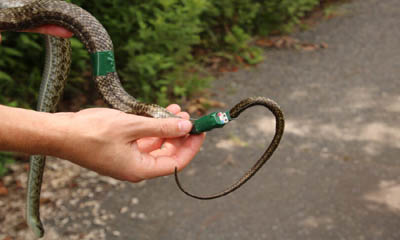 Researchers have equipped snakes with tracking devices and dosimeters to measure the radiation levels in the vicinity of the Fukushima Dai-ichi nuclear power plant in Japan, in which there were three core meltdowns in March 2011 – one of the largest anthropogenic releases of radioactive contamination in history.
Researchers have equipped snakes with tracking devices and dosimeters to measure the radiation levels in the vicinity of the Fukushima Dai-ichi nuclear power plant in Japan, in which there were three core meltdowns in March 2011 – one of the largest anthropogenic releases of radioactive contamination in history.
Radiation leaks forced tens of thousands of people to flee the area. Many have returned in the 10 years since but large areas around the plant remain off limits because of public health concerns.
A study led by the University of Georgia has shown that radioactive contamination in the Fukushima Exclusion Zone can be measured through its resident snakes.
Because of the limited distances snakes travel in their home, approximately 15 miles from the nuclear power plant, and the varying times they spend in trees and near contaminated soil, the snakes provide useful biomarkers that indicate radiation exposure.
“Snakes are important in many ecosystems because they can be both predators and prey,” said Hannah Gerke, one of the lead researchers.
Conclusion so far: The reptiles that live inside the Fukushima exclusion zone have 22 times more radioactivity than snakes outside.
Image courtesy: Hannah Gerke



